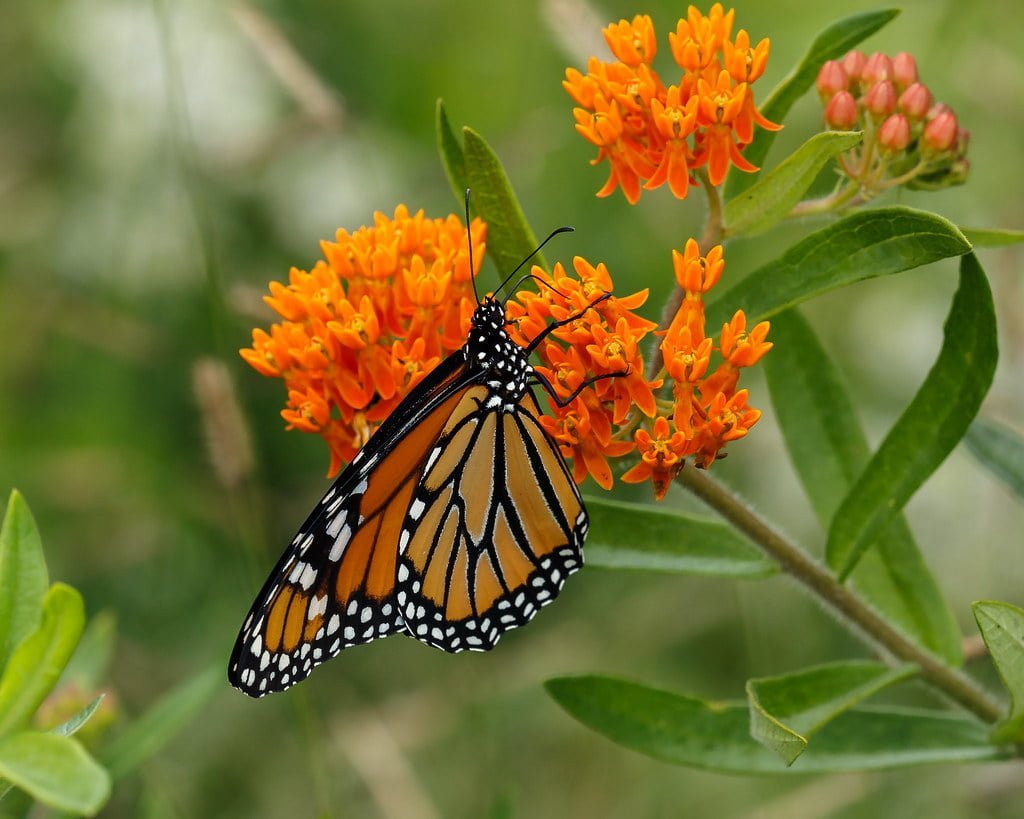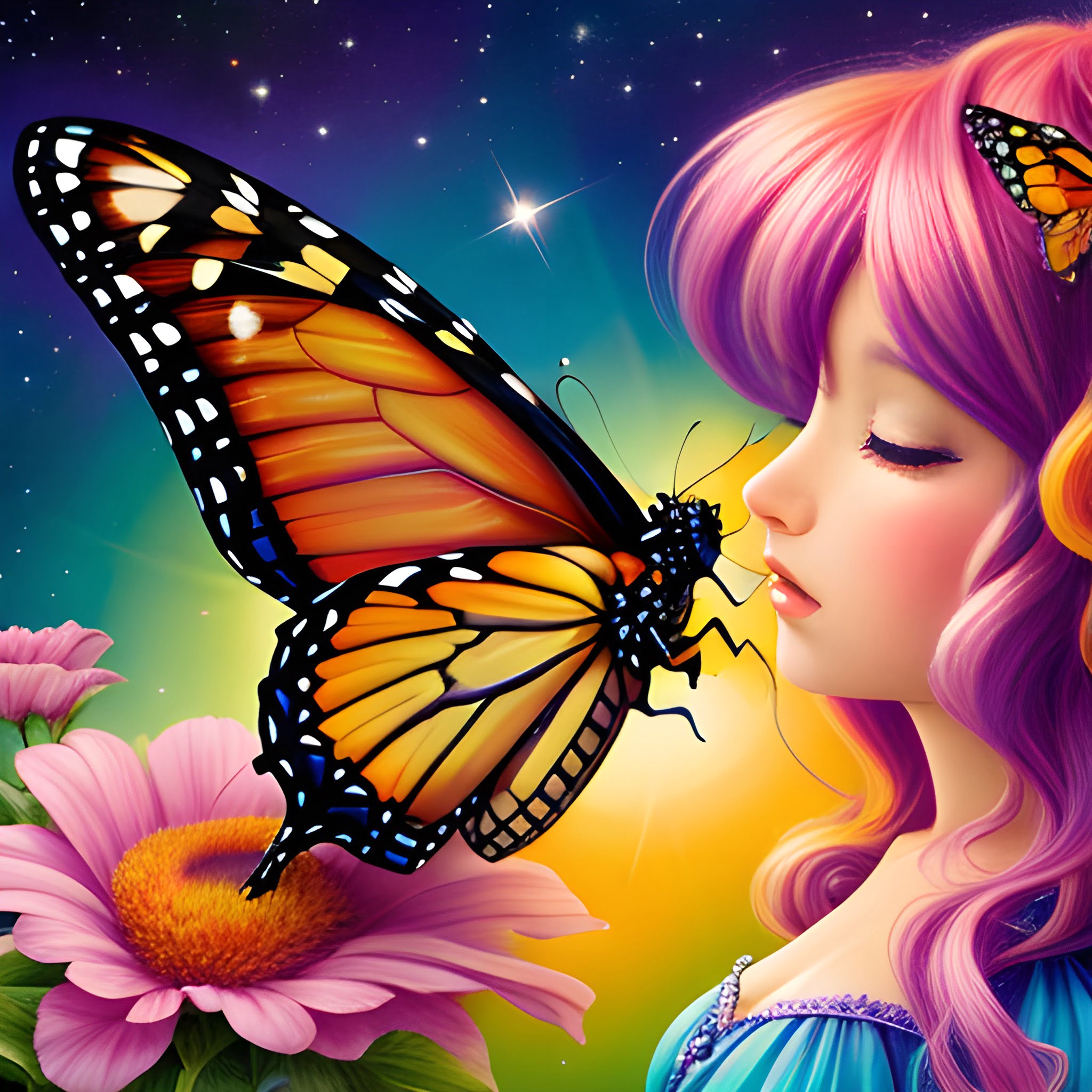A Monarch Butterfly is a stunning creature with vibrant colors and graceful movements. Despite not being able to see it directly, let me use words to paint a picture of this majestic insect for you.
Wings
The Monarch Butterfly has a wingspan of about 3.5 to 4 inches (8.9 to 10.2 centimeters). Its wings are predominantly orange, with a pattern of black veins running through them. Males and females have slightly different vein patterns. The male’s veins are thinner than the female’s. Further, the male also has two hindwing pouches which are absent on the female. A pouch is about the size of a braille dot. The edges of the wings are adorned with black borders that are dotted with white spots. The vivid orange coloration fades to a paler shade towards the outer edges of the wings.
If you were to touch the wings gently, you would feel their delicate and smooth texture. The wings are covered with tiny scales, like a dragon, but finer than dust. These rub off, fall off, and wear off over time leading to a duller and more worn exterior. Birds often attempt to grab adult Monarchs from the sky, leading to rips and splits at the wing’s rear. These are marks of pride for the Monarch; permanent displays of their excellent pilotry.
Body
The butterfly’s body, or thorax, is slender and segmented, covered in tiny sensory hairs that allow it to perceive its surroundings. The thorax connects to a long, thin abdomen, which tapers towards the end. When fresh, the thorax is a deep shade of black that seems to absorb all light. It’s wings absorb some energy directly from sunlight, when times for nectar are hard.
Flight
As the Monarch Butterfly takes flight, you might hear a soft fluttering sound created by the rhythmic flapping of its wings. It moves gracefully through the air, performing elegant and effortless maneuvers. Its flight pattern is often described as a series of gentle glides interrupted by quick, purposeful flaps. It can turn almost instantaneously, but also glide effortlessly in the slightest breeze. It can glide up hundreds of feet in the air on warm, rising thermal air pockets, and cover long distances simply blowing with the wind.
Senses
While you may not be able to observe the butterfly’s distinctive colors, you can experience its beauty in different ways. You might feel the air subtly shifting as the butterfly passes by, or notice a gentle breeze caused by the motion of its wings. The Monarch Butterfly is also known for its distinct scent, which is often described as sweet and nectar-like. Few of the sighted have been lucky enough to smell a butterfly.
Life Cycle
This remarkable insect is renowned for its incredible migratory journeys, spanning thousands of miles. Monarch Butterflies have a unique life cycle, starting as tiny eggs that hatch into caterpillars. These caterpillars grow and transform into chrysalises before emerging as fully developed butterflies. The cycle of metamorphosis is a fascinating and awe-inspiring process.
Butterfly Seeds
Monarch caterpillars can only eat Milkweed (Asclepias) plants. Therefore, a lack of Milkweed directly equals a lack of Milkweed Butterflies.
In summary, the Monarch Butterfly is a creature of extraordinary beauty, with vibrant orange wings adorned with black veins and white spots. Its flight is characterized by graceful glides and purposeful flaps. Though you may not perceive its visual splendor, you can appreciate its presence through other sensory experiences, such as touch, sound, and scent. And while you may not want to eat Milkweed plants, I assure you Monarch Butterflies do. I hope you will plant more Milkweed, because if you do, Monarch Butterfly populations will increase… one day at a time!

50 Butterfly Milkweed Seeds (Asclepias Tuberosa) for North America
More than 50 Orange Butterfly Milkweed Seeds (Asclepias tuberosa) originating from tobacco country for most of North America.
